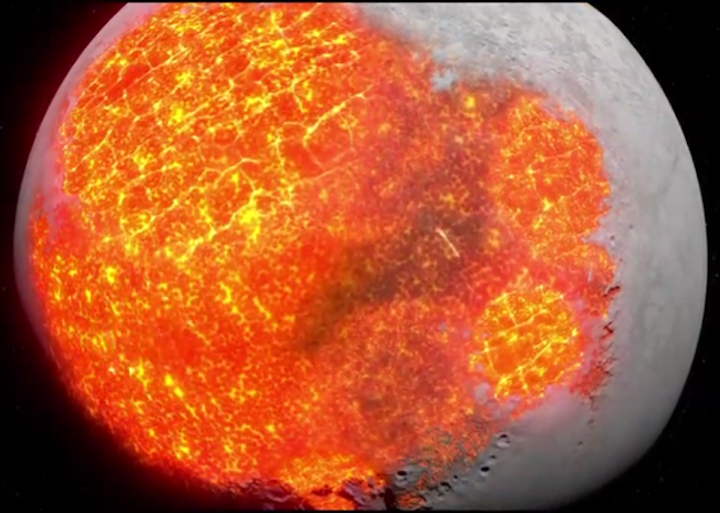11.07.2020
A new study finds that the molten rock was around for much longer than scientists thought.

Earth's newborn moon may have possessed an ocean of magma for 200 million years, much longer than scientists thought, a new study finds.
These new findings may shed light on the formation of Earth and the rest of the solar system, researchers said.
Scientists think Earth arose about 4.5 billion years ago, with the moon born a short time later. The leading explanation for the moon's origin is that it resulted from the collision of two protoplanets, or embryonic worlds. One of those was the nascent Earth, and the other was a Mars-size object called Theia.
"An important outcome of this scenario is that the early moon, which accreted from the debris of this giant impact, was very hot — hot enough for its rocky mantle to be largely molten and form what we call a magma ocean," study lead author Maxime Maurice, a planetary scientist at the German Aerospace Center in Berlin, told Space.com.
Previous research found evidence for such a magma ocean on the early moon in the composition of the lunar crust, which is best explained as the floating residue of molten rock that crystallized under lunar conditions, Maurice explained.
"While the idea of a primordial magma ocean on the moon is largely accepted, the time it took to solidify was not very clear," Maurice said. "Previous models suggested it was fairly rapid — some tens of millions of years."
In the new study, the researchers developed a model for the solidification of the ancient lunar magma ocean that "considers the influence of many processes occurring back then, some of them disregarded until now," Maurice said. One such process was mantle convection — the way eddies can form and churn in molten rock, "which, on the Earth, causes volcanism," he said.
All in all, they found the lunar magma ocean may have solidified over the course of 150 million to 200 million years, lasting about 10 times longer than previously thought. They also estimated the moon formed between 4.4 billion and 4.45 billion years ago, which is 50 million to 100 million years later than previously considered, Maurice said. This age closely matches that of Earth's core.
"There is a strong link between the moon-forming event and the formation of the Earth's core, because the giant impact likely resulted in large scale melting in the Earth's mantle, which significantly helped the formation of the core," Maurice said.
If the moon is as old as the new model estimates, that suggests the era of giant collisions such as the one that gave birth to the moon, which marked the last stage of planetary formation, was still active about 150 million years after the birth of the solar system, Maurice said. "It was very exciting to see that our findings had these kinds of broad implications."
The scientists detailed their findings online July 10 in the journal Science Advances.
Quelle: SC
